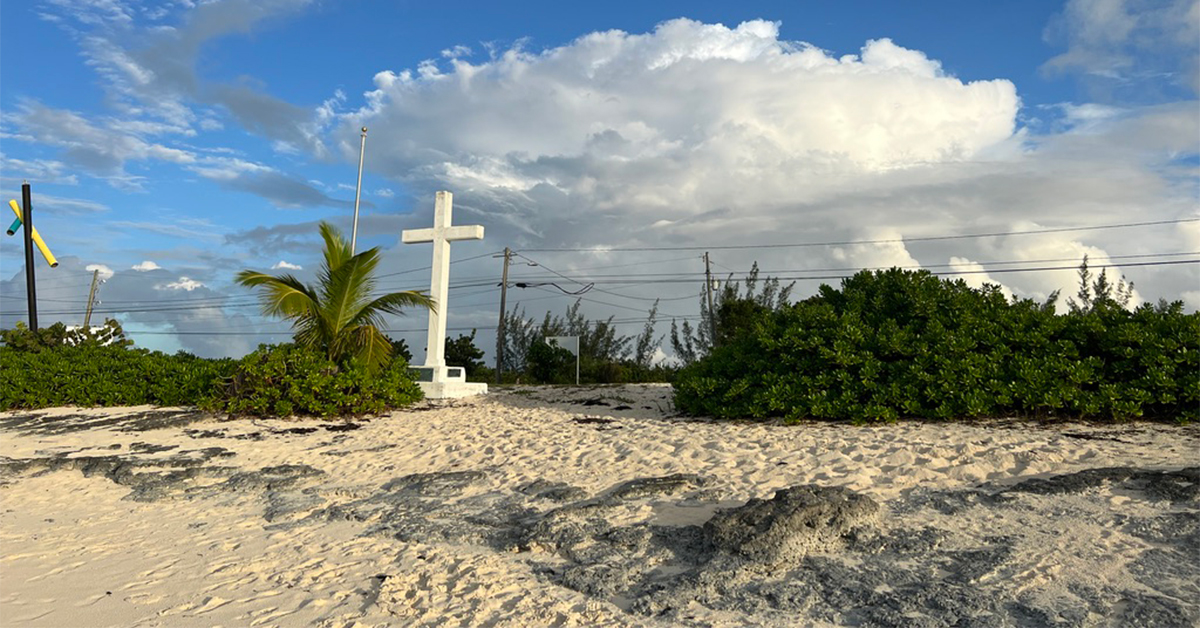6Views 0Comments

This Is the Beach in The Bahamas Where Christopher Columbus First Landed in the Americas
I’m walking on empty sand. The sky is silver-grey. There is almost nothing here: a few scattered casuarina trees, a white stone plaque; a tall white cross, the dormant cauldron of an Olympic flame. You can come here to Long Bay for seven days and never see another soul.
This is the tiny island of San Salvador in The Bahamas, one of the most remote, pristine, uncrowded islands in the country.
But it was also the site of the most significant event in this hemisphere in the last 533 years.
It was here on Long Bay that Christopher Columbus made his first landfall in the Americas, a “small island of the Lucayos” that was called Guanahani.

And it’s almost certain that this beach looks just about the way it did when he arrived.
The plaque is a monument to his visit, donated by the government of Spain back in 1992; the large cauldron the remnant of a torch-lighting stop ahead of the 1968 Mexico City Olympics.
The cross dates back to a ceremony in 1950, aiming to mark the spot — or near the spot — of Columbus’ actual arrival on Long Bay. There’s also a monument buried beneath the sea just beyond the shore.
Now it’s no secret that over the last few decades, in particular, Columbus’ legacy has been, well, dynamic.
However you feel about Columbus, when you step around, and you close your eyes, and you imagine that it was on this beach, surrounded by brush and sand and nothing else, the fate of human history changed — you feel it.
The import of this place simply cannot be overstated, and yet San Salvador is an island most people know only from the corner of a history textbook, if at all.
Today, it’s one of the most beautiful, captivating islands in The Bahamas — one with a very small population, a handful of places to stay and the kind of mesmerizing natural scenery you can only find in the Out Islands.
And on Long Bay it is mesmerizing indeed, when you look around and see emptiness; turn your ears and hear silence.
It’s not easy to come upon a place that single-handedly changed the course of humanity. But on a short flight from Miami, you can find it here.
Because it was on this beach on Oct. 12, 1492, that the New World, for all of its grandeur and gauntlets and progress and peril, began.
And yet the beach remains the same.



